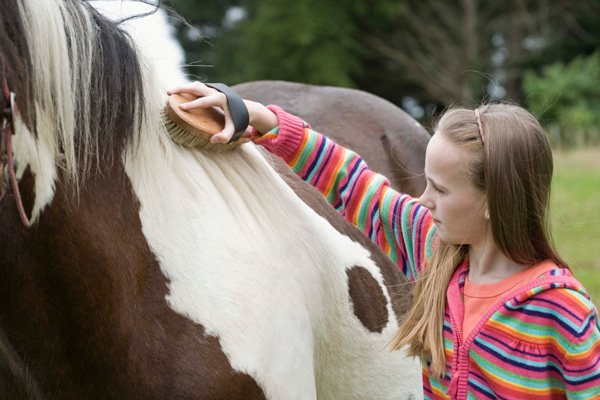
Specific ground surfaces are often associated with a particular discipline. For instance, jumpers require a more yielding surface than dressage horses, whereas cutting horses need a deeper surface to cushion their quick stops and sharp turns. Everything to do with footing is about balance; the surface needs to give, but not too much.
Natural Surfaces
While sand is generally considered the footing of choice, it can vary greatly in mineral content and size. “Ranging from coarse or very fine [the finer the sand the higher potential for dust, but the stronger it is], sand requires less maintenance when compared with a hard dirt surface, and easily can be used in combination with other elements, such as stone dust, cedar saw dust/chips, top soil, or man-made materials, said John Dienhart of West Coast Footings.

A grass or turf surface is often valued as much for its esthetic appeal as for its user-friendliness. Dienhart said that on top of being supple and resilient, in an ideal climate that has corresponding periods of sun and rain, without frost or extreme heat, it is quite easy to maintain.
“However, on the downside, it does not hold up well with over-use,” he said. “Soil compaction and loss of grass cover, for example, can cause bald spots that tend to pond or form gullies, or if the soil dries out, turf becomes very hard.”
Ground Surface Maintenance
Dienhart claims that over 80% of soundness-related injuries are a result of poorly constructed arenas. “The types and amounts of materials are key to safety and performance,” he said.
Stressing that critical decisions are best made long before you break ground, his core message is to look at the arena as a unique structure–location, discipline and specific needs should all play major roles in the design.
“Advance planning will save you from making costly mistakes,” he said, adding that proper management will help keep your arena in good condition for years.
Dienhart then noted that using the right equipment is a critical part of the operation. “Drags are designed to aerate the material and watering systems are for adding moisture to get the right combination of buoyancy and compaction,” he explained.
He concluded by saying that your equipment choices will be dictated by the type of surface materials and the frequency of use, which often also includes other applications, such as yard or field management.


